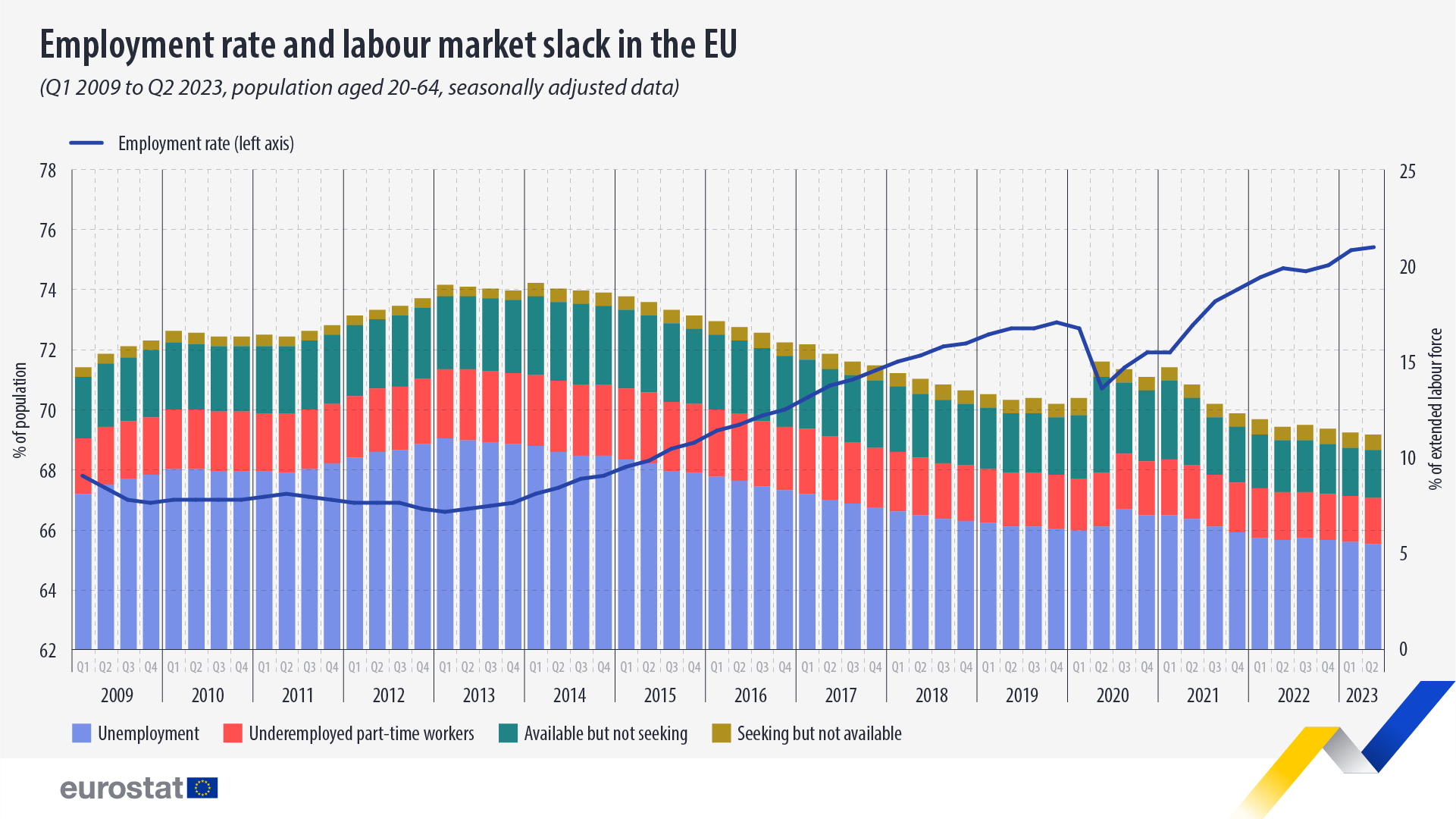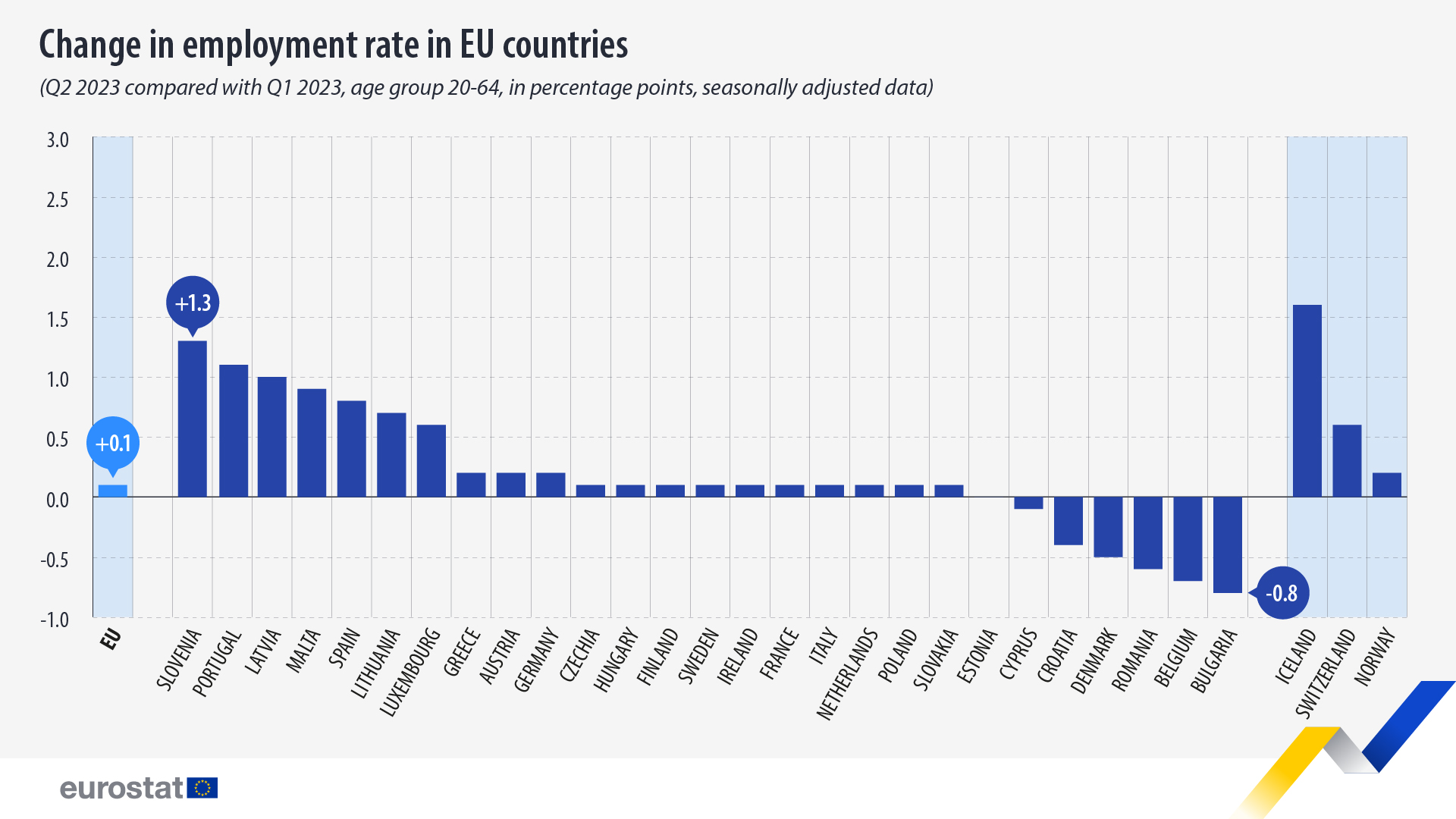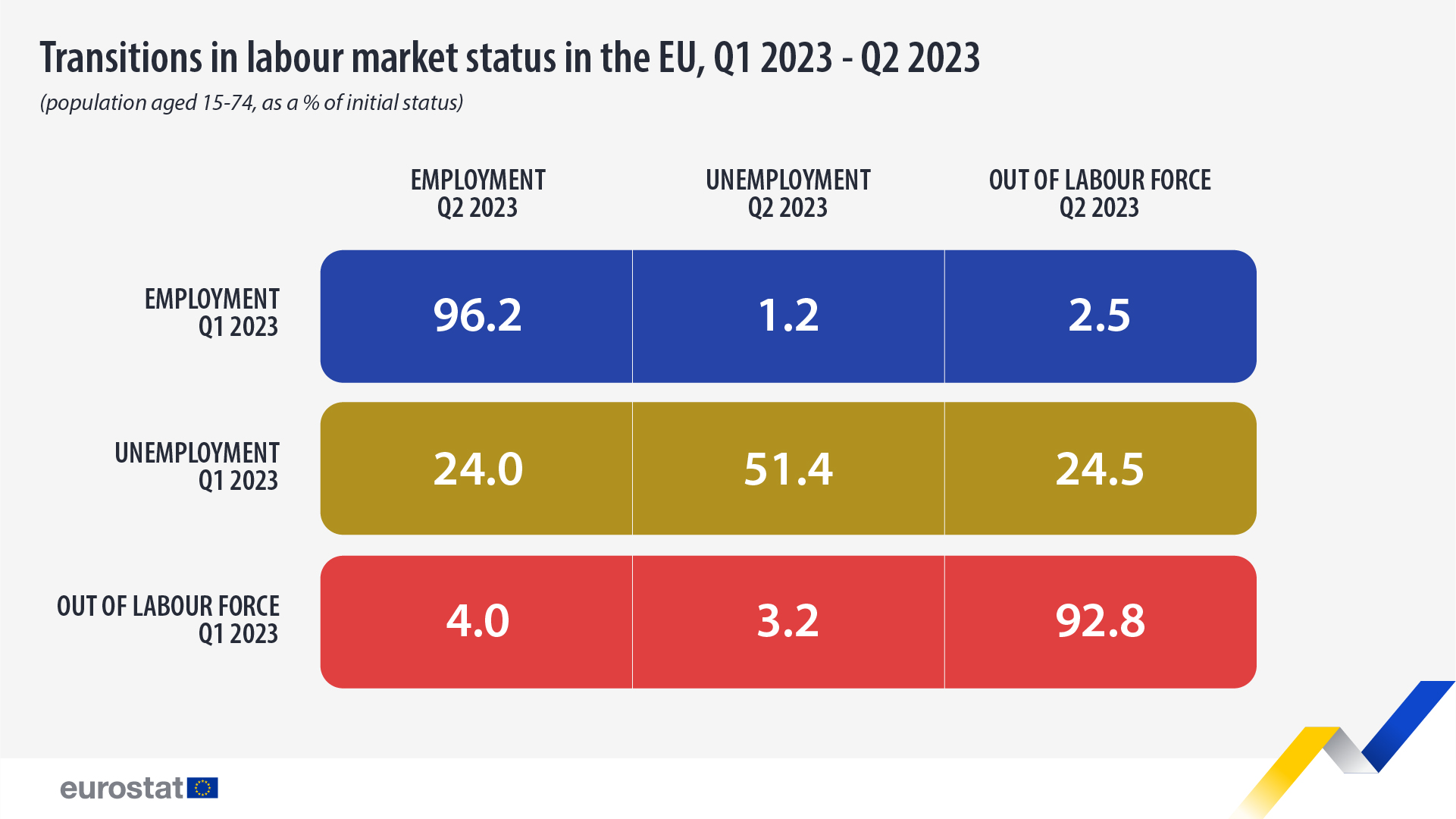In the EU, the employment rate of people aged 20-64 stood at 75.4% in the second quarter of 2023, an increase of 0.1 percentage points (pp) compared with the first quarter of 2023.
Labour market slack – encompassing those with unmet employment needs, a large part of which includes unemployed individuals – amounted to 11.2% of the extended labour force aged 20-64 in the second quarter of 2023 (-0.1 pp compared with the first quarter of 2023).
This information comes from data on the labour market in the second quarter of 2023 published today by Eurostat. This article presents only a handful of findings from the more detailed Statistics Explained article.
Source datasets: lfsi_emp_q and lfsi_sla_q
Changes in the employment rate between the first and the second quarter of 2023 varied across the EU countries. The highest increases were recorded in Slovenia (+1.3 pp), Portugal (+1.1 pp) and Latvia (+1.0 pp).
Source dataset: lfsi_emp_q
While employment rose in 20 EU countries, it remained stable in Estonia and decreased in 6 EU countries, with the biggest decreases recorded in Bulgaria (-0.8 pp), Belgium (-0.7 pp) and Romania (-0.6 pp).
Between the first and the second quarter of 2023, 3.1 million unemployed people in the EU (24.0% of all unemployed in the first quarter of 2023) found a job. During this period, 6.7 million (51.4%) remained unemployed, and 3.2 million unemployed people (24.5%) transitioned out of the labour force.
This information comes from recently published data on labour market flows in the second quarter of 2023. The article presents a handful of findings from the more detailed Statistics Explained article.
Source dataset: lfsi_long_q (including Member States' data)
The visual and table give an overview of all possible transitions and show the changes in labour market status. In the visual, the figures for employment, unemployment and out of the labour force refer to the number of people remaining in each status between the two quarters. The grey arrows indicate the direction of net flows (see methodological notes).
Source dataset: lfsi_long_q (including Member States' data)
Of all those in employment in the first quarter of 2023, 2.5 million (1.2%) became unemployed in the second quarter of 2023, and 5.2 million (2.5%) transitioned out of the labour force.
From those counted as out of the labour force in the first quarter of 2023, 4.7 million (4.0%) moved into employment in the second quarter of 2023 and 3.7 million (3.2%) transitioned into unemployment.





